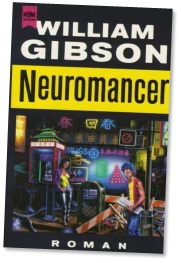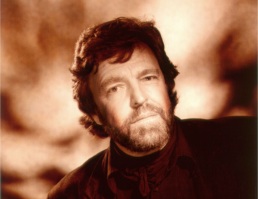 The history of cyberculture begins from the time the term cyberspace appeared first in William Gibson's science-fiction novel «Neuromancer» in 1985. It was used for the description of universal electronic space in which billions of people coexist. The history of cyberculture begins from the time the term cyberspace appeared first in William Gibson's science-fiction novel «Neuromancer» in 1985. It was used for the description of universal electronic space in which billions of people coexist.
Being put into words a cyberspace by William Gibson — is a «collective hallucination», outside which there are no those points (cities, museums, libraries, etc.) which we may virtually visit, but only lines exist — the liaisons connecting Web-pages demanded by us.
The idea of cyberspace itself came to his mind, when he watched children playing videogames. Nevertheless, computers to Gibson — are only a metaphor, because during the work on «Neuromancer» he had vague idea about how these machines work, as far as many words («virus», «soft») were used incorrectly. From our point of view, Gibson described cyberspace in his first book quite poetical just for the term:
|
| |
 |
Cyberspace. A consensual hallucination experienced daily by billions of legitimate operators, in every nation, by children being taught mathematical concepts... A graphical representation of data abstracted from the banks of every computer in the human system. Unthinkable complexity. Lines of light ranged in the non-space of the mind, clusters and constellations of data. Like city lights, receding... |
 |
| |
|
< Listen to the modern definition of «cyberspace» by William Gibson >
(opens in a new window) |
|
|
|
|
If to speak less fine, then imagine that all the work you are doing on the computers is finally transferred into the manipulation with 3D pictures, which appear not on the screen but right in your brain. Actually: technically cyberspace, in the form in which Gibson described it, — not these pictures on the screen, but a nervous system directly connected to computer network. By the way, such idea of digital nervous system will be proposed in 1999 by Bill Gates in his «Business @ the Speed of Thought» book. We see cyberspace as a sphere of the information received by means of electronics. As from the psychological viewpoint, cyberspace — artificial imagination, environment for creating lies. |
|
 |
|
|
 |
 |
|
 |
 John Perry Barlow John Perry Barlow |
Declaration of Cyberspace Independence
« Ours is a world that is both
everywhere and nowhere,
but it is not where bodies live » |
The Declaration of the Independence of Cyberspace was written in 1996 by John Perry Barlow, co-founder of Electronic Frontier Foundation.
This was the response of the guy, often called «the Thomas Jefferson of Cyberspace», to the actions of the White House that was to introduce Telecom «Reform» Act, which would impose strict censorship to the Internet cyberspace.
Posted on thousands websites The Declaration of the Independence of Cyberspace become the first attempt to stand for the rights of virtual community. Original document is located by the following address: http://homes.eff.org/~barlow/Declaration-Final.html |
|
|
 |
|
|
 |
Thus, «the ground» for the further growth of cyberculture was established. Let us move on to the next page and see these people who populate this virtual environment of cyberspace — the cyberpunks.
|
| |
|
« intro | cyberspace | cyberpunks »
|
| |
|

 The history of cyberculture begins from the time the term cyberspace appeared first in William Gibson's science-fiction novel «Neuromancer» in 1985. It was used for the description of universal electronic space in which billions of people coexist.
The history of cyberculture begins from the time the term cyberspace appeared first in William Gibson's science-fiction novel «Neuromancer» in 1985. It was used for the description of universal electronic space in which billions of people coexist.